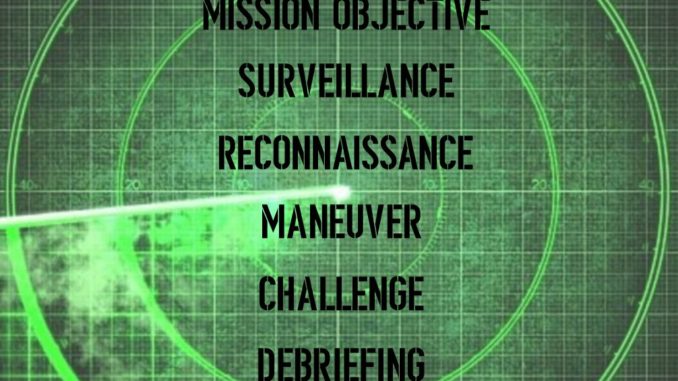
I moved out of the classroom in 2016 to be an Instructional Technology Coach. I’m still in this role and help teachers on two of our eight 6A comprehensive high schools. While I was in between appointments or had any down-time, I started creating a gamified Algebra 1 course that I could showcase to teachers once it was completed.
While in an instructional coaches office one day, I showed the Science IC what I had started and she loved it. She told me I should definitely show the Math IC, so I did. She took me down to the 8th grade math team immediately and, after showing it to them as a possible STAAR review option, they were all in.
The team gave me a list of their lowest TEKS, a list of their favorite video links, and curriculum they would have used for their review. Below is the anatomy of that course.
Home Page
This is the page where students landed. Once they completed the Basic Training Module, the rest of the board opened up for them. They could do Missions (the main lessons), try Covert Operations (extra “fun” stuff that would earn them more XP), go to Medals (harder “fun” lessons for more XP), or go to the Command Post where they could see how many points it would take to level up and see which rank they earned.
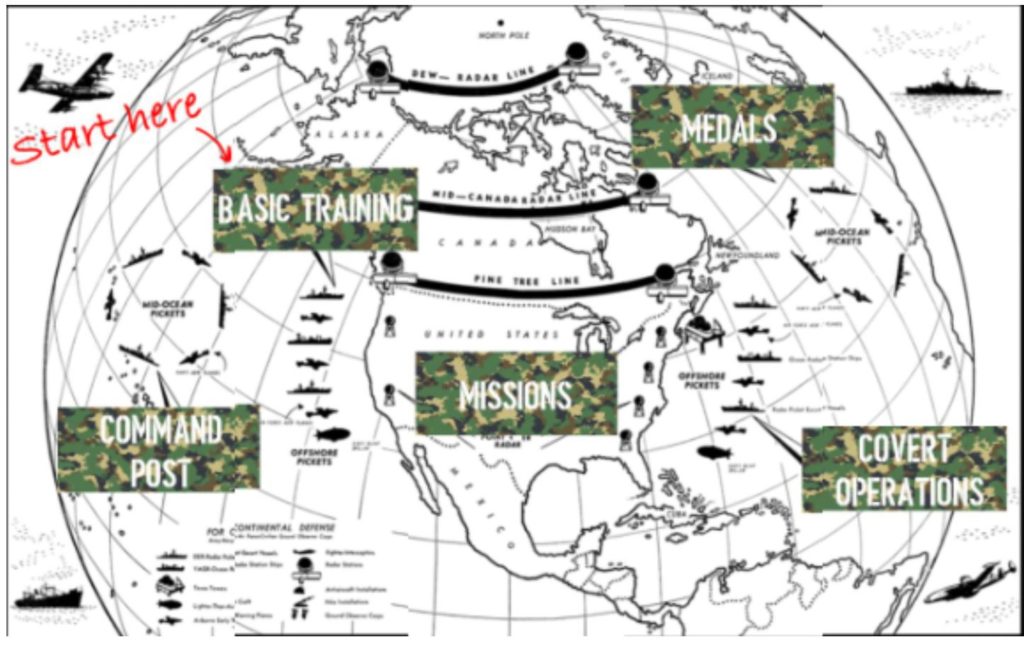
Missions
The Missions followed this structure:
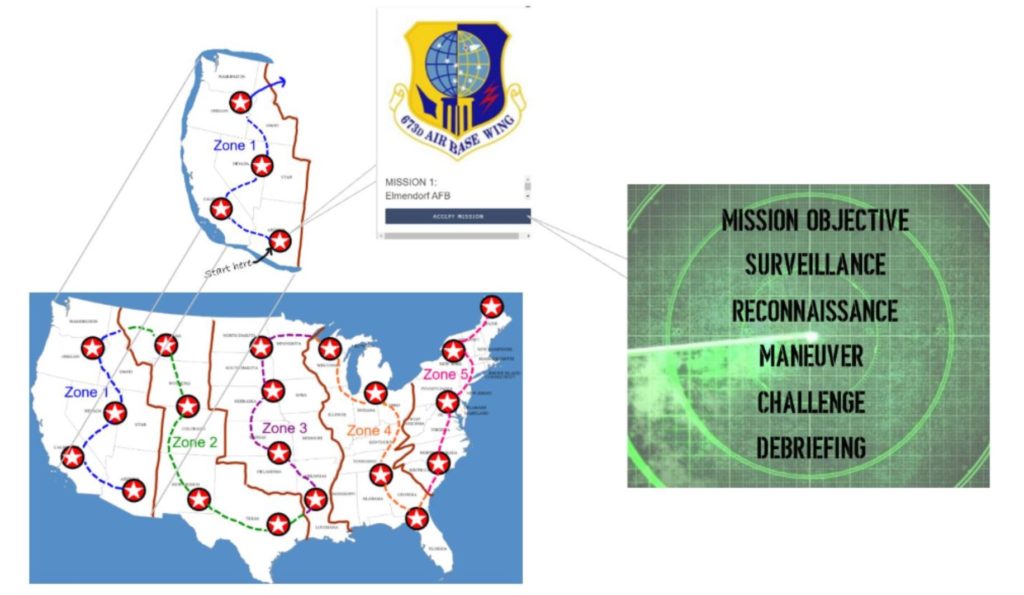
Students would be taken to the Main Map page and then be taken to a Zone. When they clicked on a star on the Zone, that would take them to their Mission. When they accepted that mission, they were able to complete the lesson.
Lesson Structure
Each of the five Zones has four missions. The goal of each mission is to defend an Air Force Base. When you “Accept Mission,” you have five required parts of the mission to complete:
1. Mission Objective – discover what the lesson is about using a Nearpod.
2. Surveillance – watch videos or look through a website and take notes.
3. Reconnaissance – study vocabulary terms.
4. Maneuver – take a timed quiz to assess knowledge and gain XP
5. Challenge (OPTIONAL) – take a quiz to gain experience points.
6. Debriefing – collect your badge and move to next mission.
Each of the missions were to be done in sequential order, so the main map was not a “Choice Board” necessarily.
Lesson Structure (more in-depth)
Mission Objective:
I created a reteach Nearpod for each TEK. It took them back through the basics and gave them instant feedback on quizzes and guiding questions.
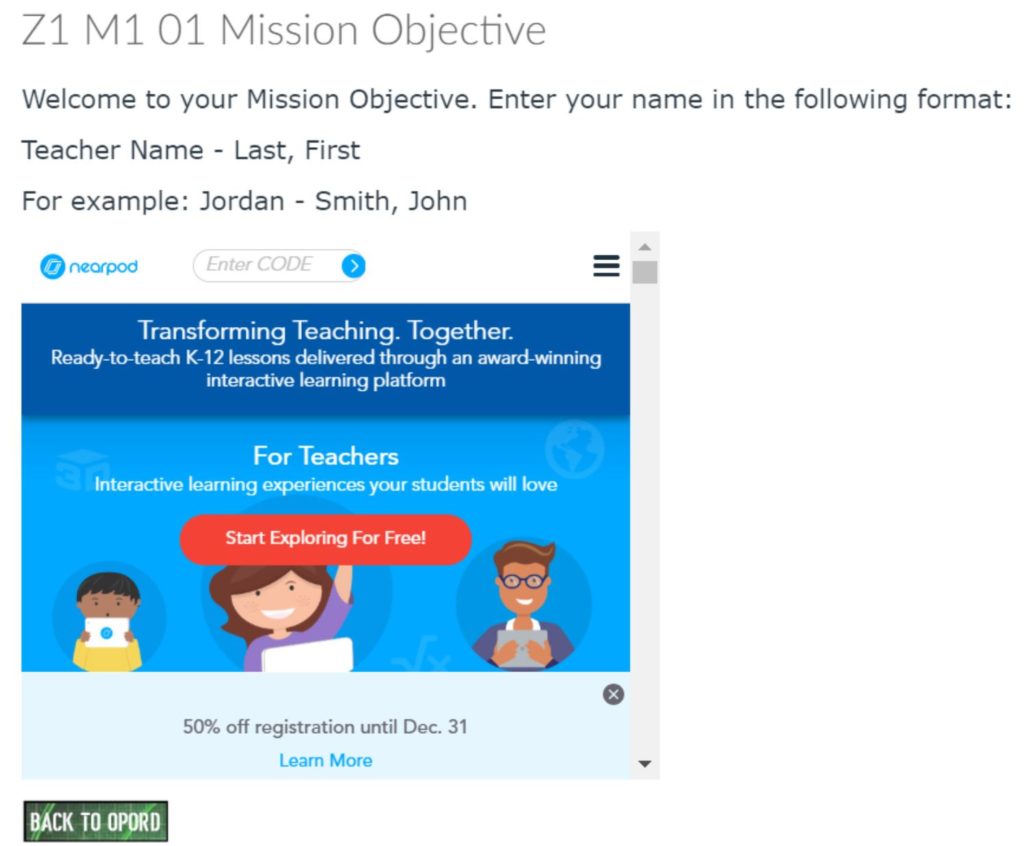
Surveillance:
Students were asked to watch three videos (too many, actually) and take notes. If done again, I’d have the kids pick one they wanted to watch.

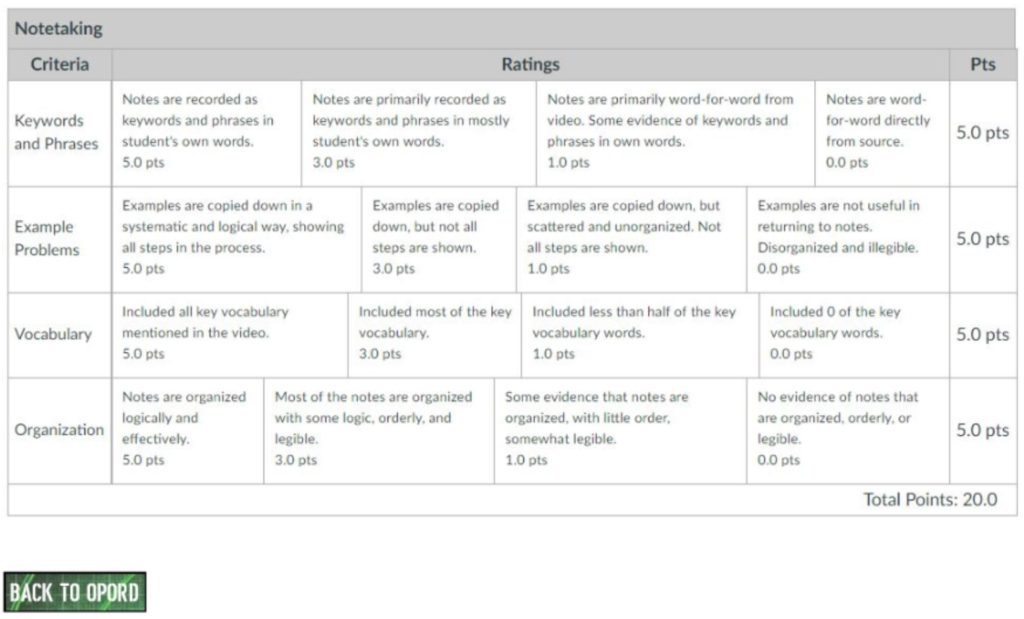
Surveillance Checkpoint:
Here is where students turned in their notes from the Surveillance. The notes rubric is attached to the assignment for easy grading.
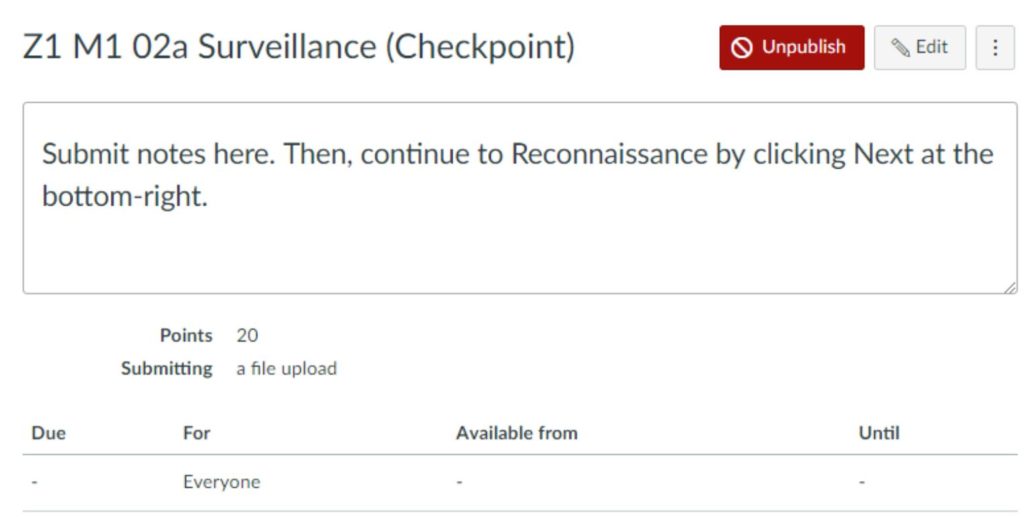

Reconnaissance:
The Reconnaissance was a vocabulary review. I embedded a Quizlet for students to go through. They have the option of changing the study mode and this was just for review and not for any XP.
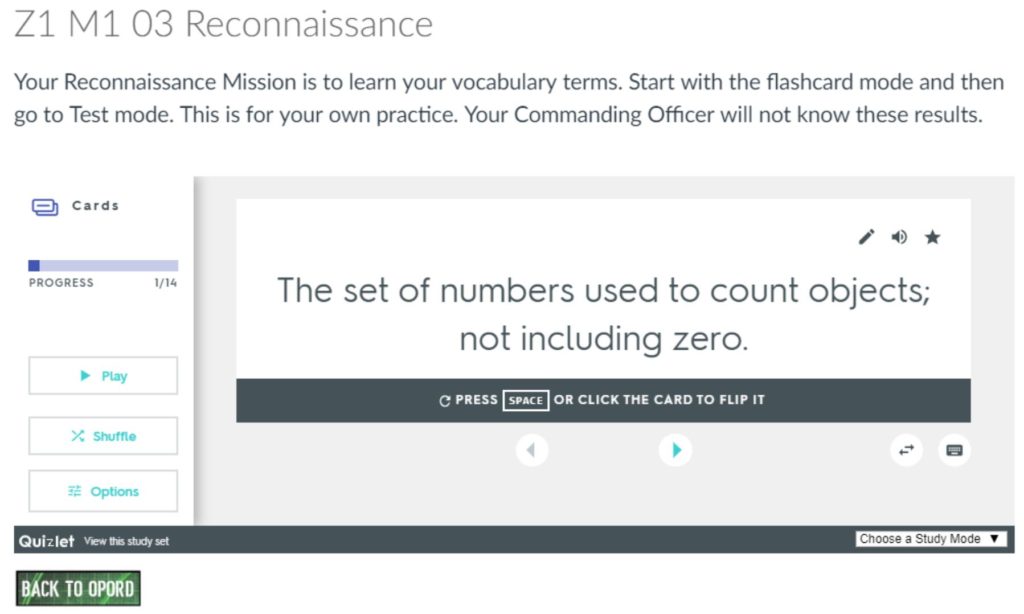
Maneuver:
The Maneuver for this course was a multiple choice quiz. Students had three attempts and had to make at least a 60 to move forward in the module.
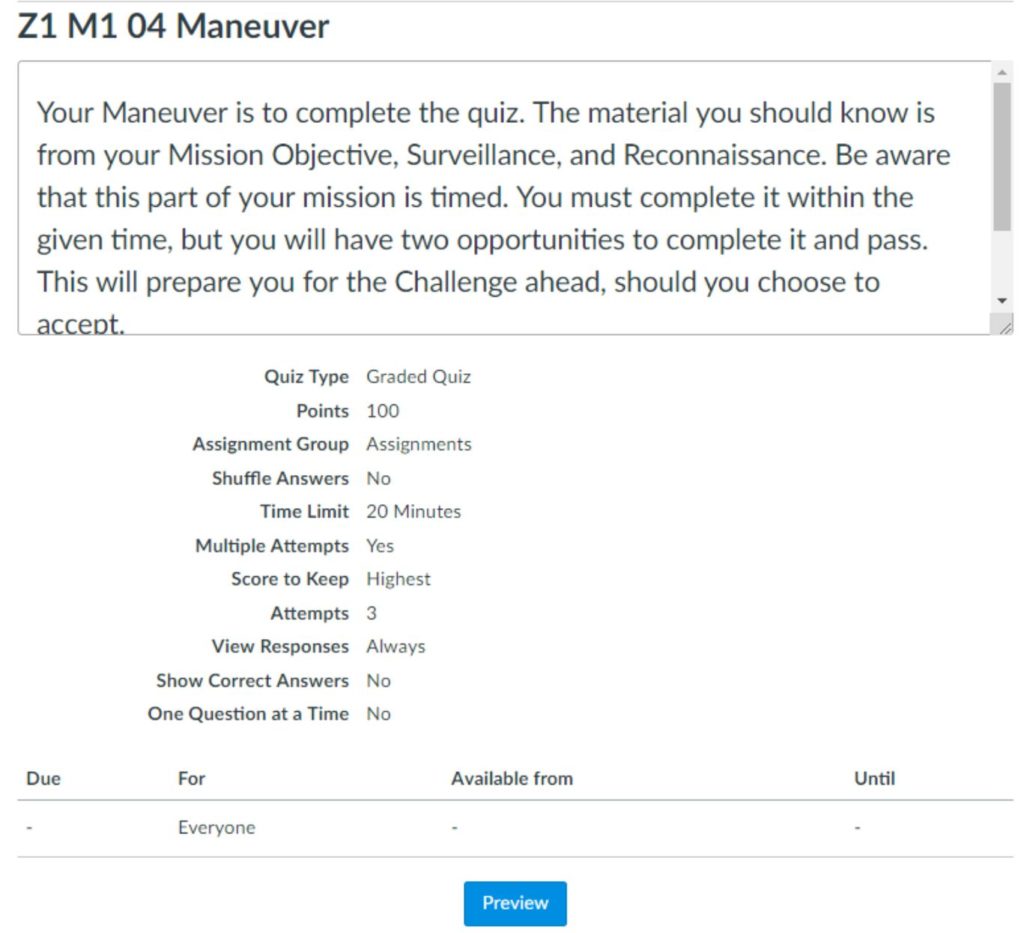
Challenge or Debrief:
When finished with the Maneuver, students had a choice between doing the Challenge or going to the Debrief and being finished with the Mission.

Challenge:
This was an assignment that, for this course, was another quiz with more challenging questions.
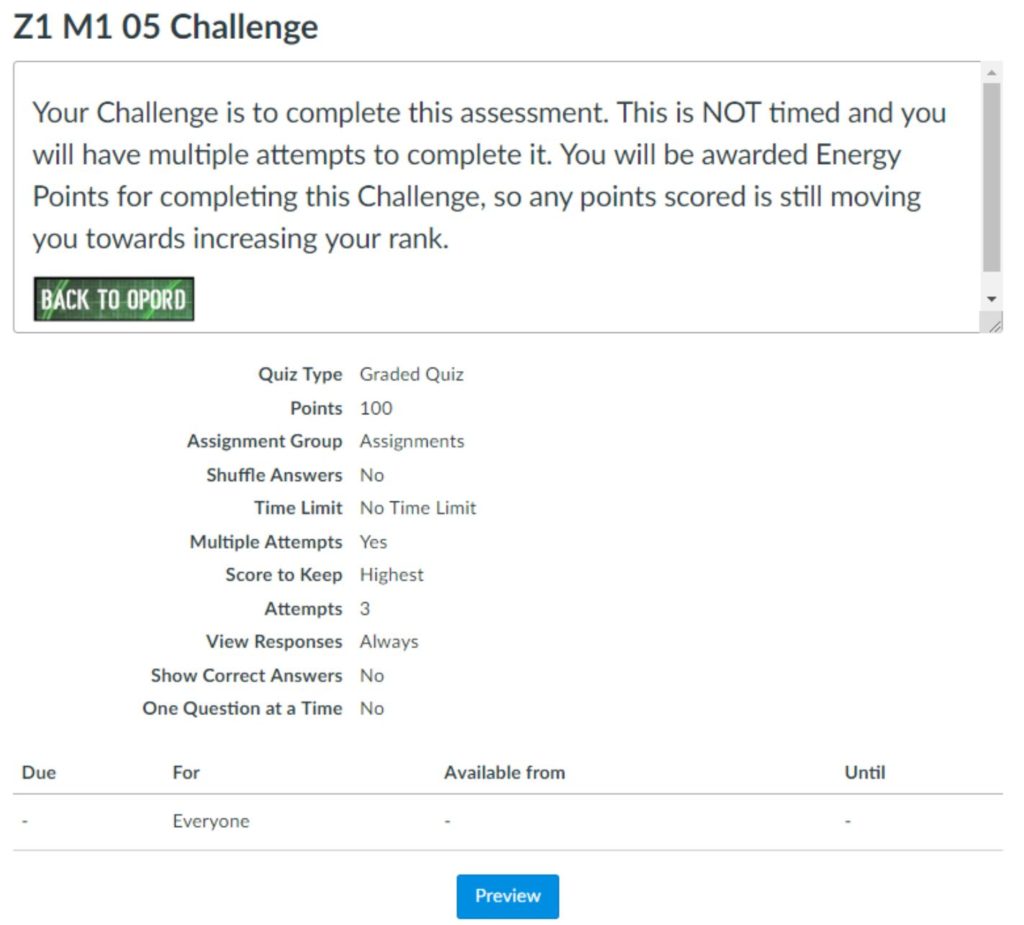
Debrief:
This was the “Congratulations” page for students.
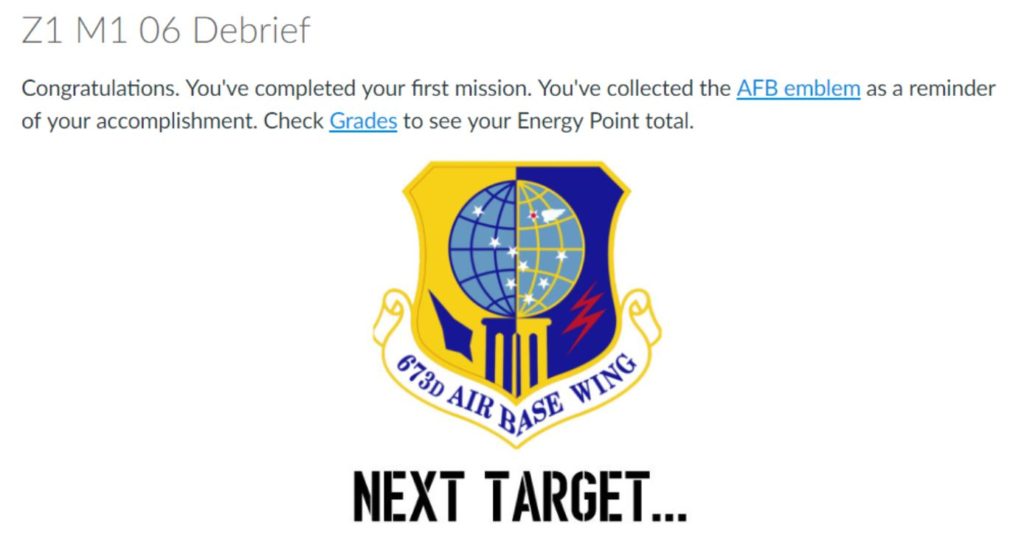
The students worked through 20 Missions. In retrospect, that was way too many. Ten missions would have been more reasonable. The kids that were allowed to take the survey really enjoyed the course. It gave students who just needed a refresher on some of these TEKS a fun way to review. It also enabled the teachers to let their kids “loose” on the course while they worked with small groups of students.
Read more in the next post about additional content that was available to the students: Covert Operations and Medals.
